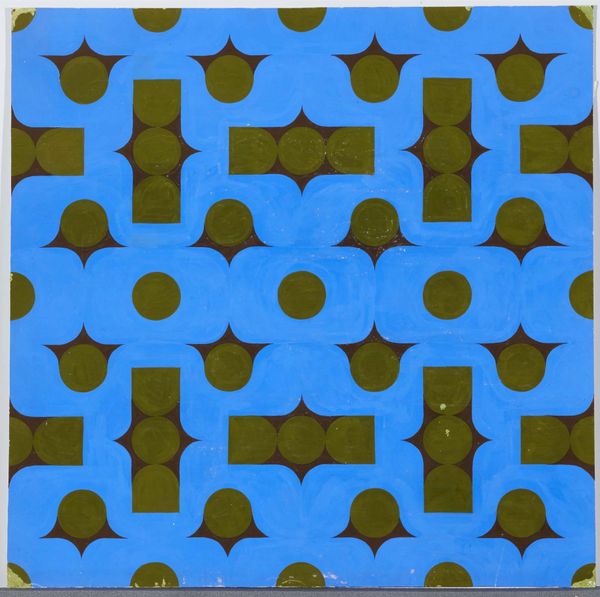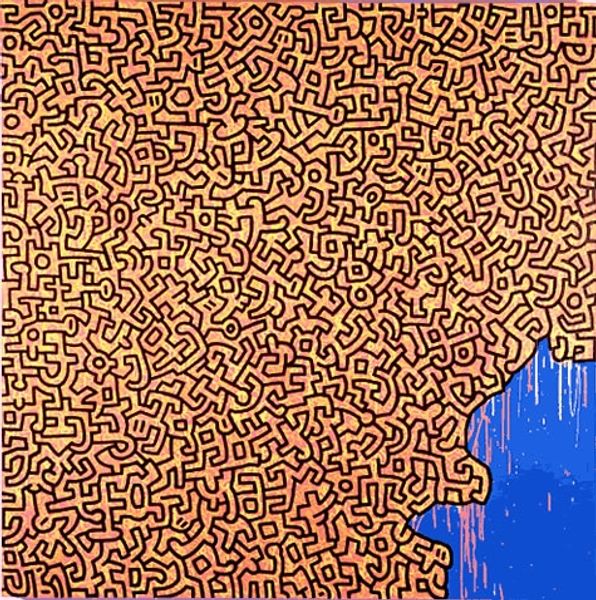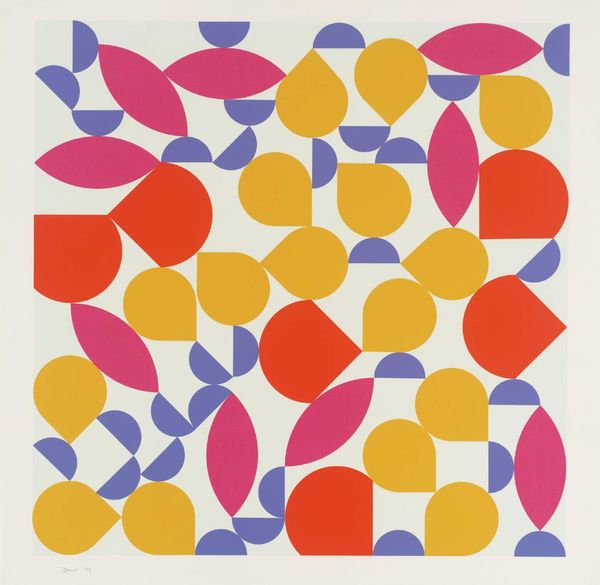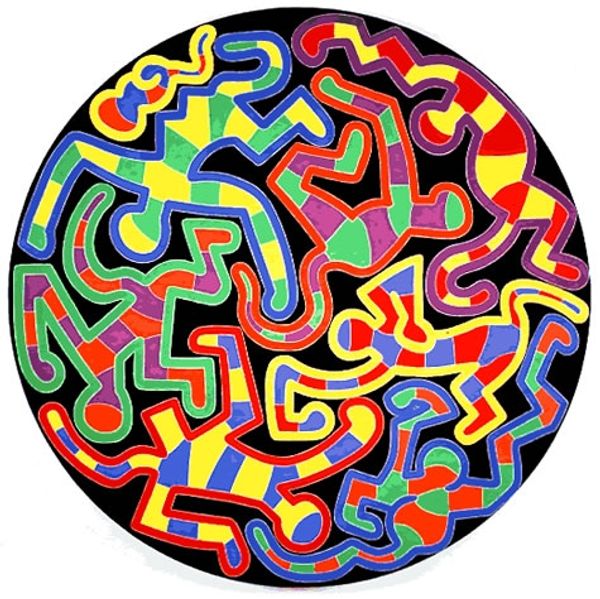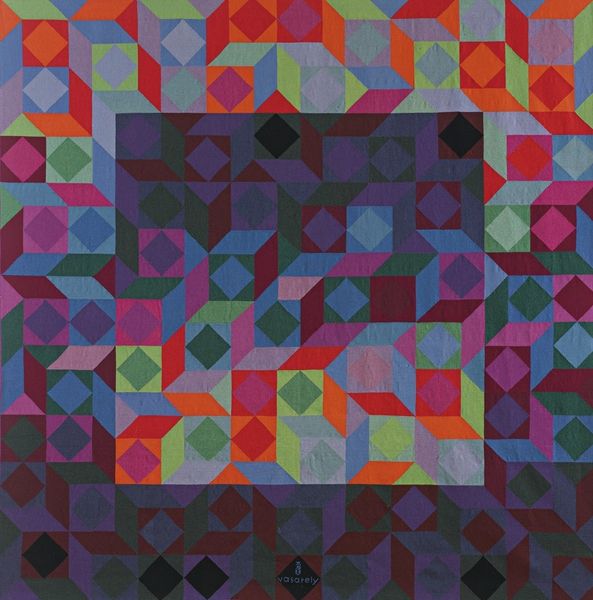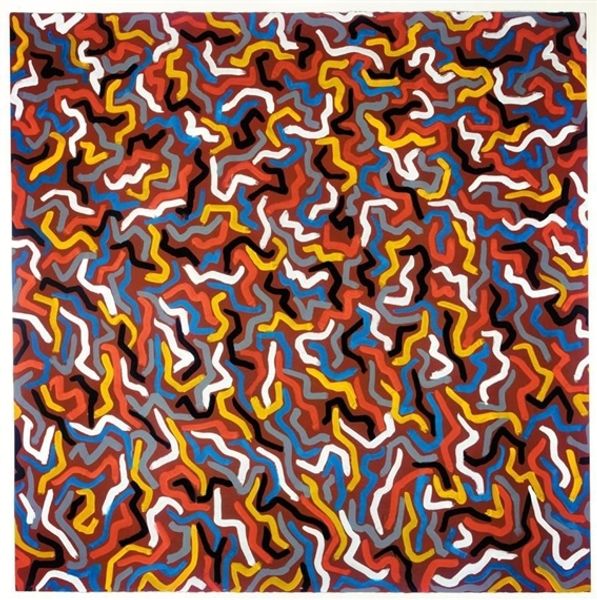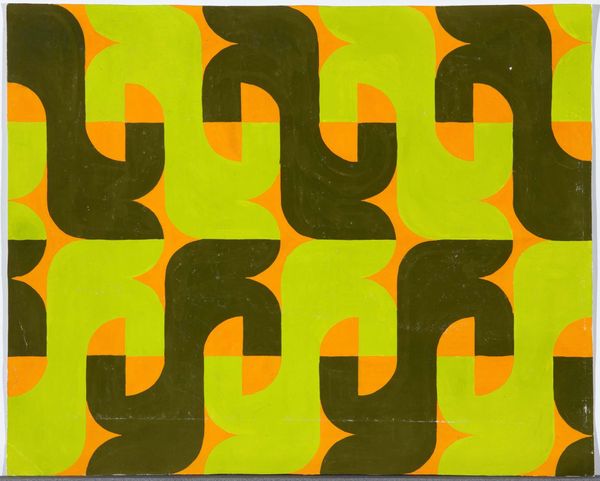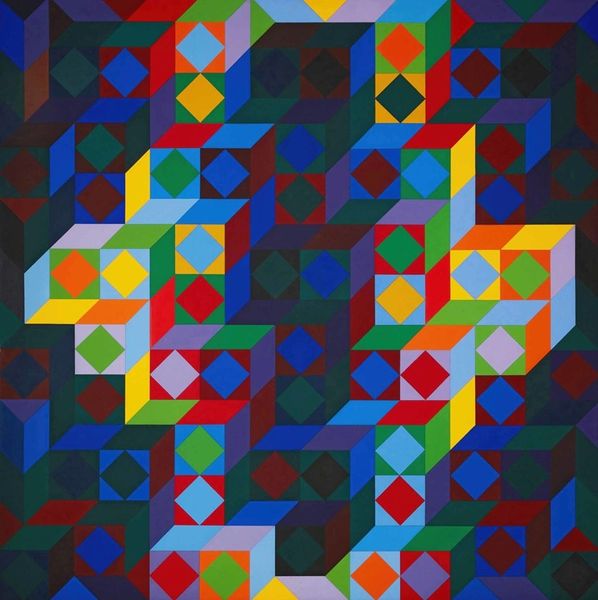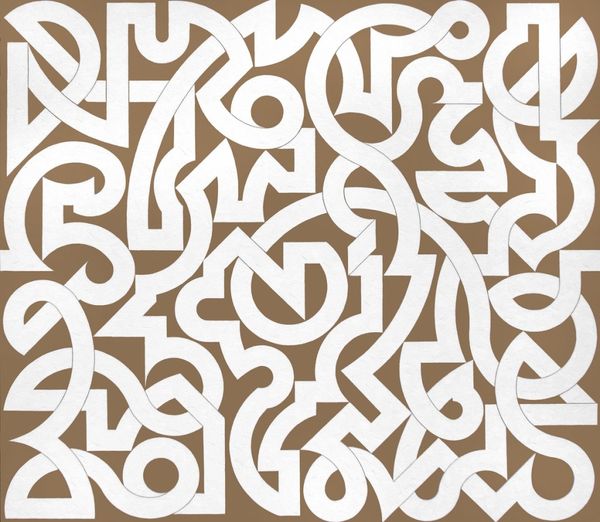
acrylic-paint
#
pattern
#
colour-field-painting
#
acrylic-paint
#
geometric pattern
#
abstract pattern
#
geometric
#
geometric-abstraction
#
vertical pattern
#
abstraction
#
pop-art
#
hard-edge-painting
Copyright: Soledad Sevilla,Fair Use
Curator: This artwork is an Untitled piece by Soledad Sevilla, created in 1969. Editor: The immediate feeling is vibrant. I see a tight, almost dizzying, geometric pattern. A grid of interlocking shapes, boldly rendered in yellows, blues and dark, negative spaces. The hard edges give it a crisp, manufactured feel. Curator: Indeed. Sevilla's work from this period often engages with hard-edge painting and geometric abstraction, both movements that gained traction in the mid-20th century. We can observe the influence of pop art too, notably in its bright color choices and use of repetition. How might those aspects speak to the period's social landscape? Editor: Thinking about the process, the repetitive forms make me consider the mechanization of art production and the use of acrylics as a relatively new material offering unprecedented evenness and flatness of color. Its links to commercial design too, of course. Is Sevilla challenging the conventional art hierarchies here by embracing industrially produced art media and forms? Curator: Absolutely, those would have been key points of reference. This type of hard-edge work certainly challenges traditional artistic expression in favor of precision and industrial aesthetics. We also must think about Spain in the late 60s. Where would Sevilla position herself in relation to Franco’s regime at that time? Is she, perhaps, aiming for a sort of universally understandable language as a form of implicit commentary on that repression? Editor: I’m interested in this repetition and use of geometric pattern in a very economical way. Thinking about art, labor, and mass production: the regular geometry of the shapes is clearly critical to the industrial possibilities enabled by serial repetition, it is a form that could become entirely separate from the artist's own hand through mechanized or commercial reproductions. Curator: So, in essence, Sevilla is negotiating her space within broader dialogues around artistic authority. Editor: Precisely. This work serves as an echo, too, in how social spaces and art can challenge or support regimes. Looking at "Untitled," it makes me want to reassess painting and materiality. Curator: And for me, I’m prompted to think about the ever-shifting grounds of abstract language as political discourse. Thank you!
Comments
No comments
Be the first to comment and join the conversation on the ultimate creative platform.

